Ancient artifacts about sheep
From:Chinaculture.org NetWriter:Date:2015-02-03
The sheep is one of the six domesticated animals. Ancient people regarded the sheep as a mild-tempered and auspicious animal, which can be seen from the Chinese character "祥" (auspicious) which includes "羊" (sheep) in its pattern. Therefore, many artifacts in ancient times were decorated with sheep patterns or are in shapes resembling sheep. Let us take a look.
Shang and Zhou dynasties (16th century BC -771 BC):
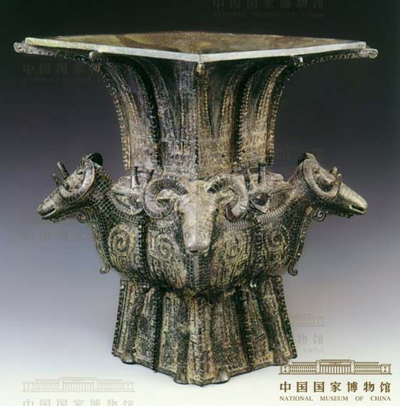
Four Sheep Square Zun
The most well-known sheep-themed relic is the bronze piece Four Sheep Square Zun in the National Museum of China. Used as a wine vessel at rituals in the late Shang Dynasty (between the 11th-17th centuries BC), it was excavated from a hillside in Hunan province in 1938. It is renowned as the best example of bronze-making in Chinese history.
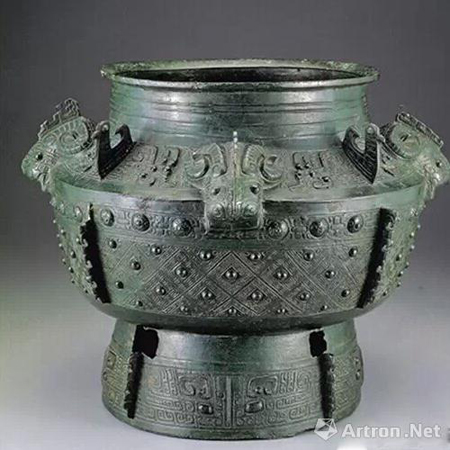
Four Sheep Bronze Lei
Four Sheep Bronze Lei from the late Shang Dynasty, unearthed at Sanxingdui in Guanghan in Sichuan province, is also a treasure among bronze pieces. A "lei" is an ancient urn-shaped wine vessel.
Han Dynasty (220–206 BC):
During the Han Dynasty, sheep were not only livestock, but also used as a means of transport. Sheep images are found on much pottery from this period. Some sheep-shaped porcelain began to emerge during the Six Dynasties period, which became a fad.
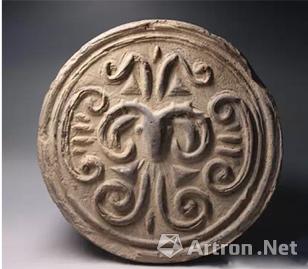
An artifact designed with sheep patterns from the Han Dynasty.
Tang Dynasty(AD 618-907) and Song Dynasty (960-1279):
Ancient artifacts about sheep
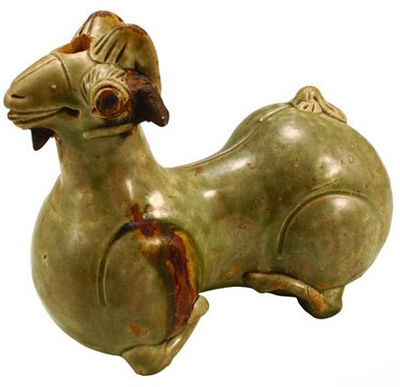
A sheep-shaped candlestick
This is a sheep-shaped candlestick from the Zhenjiang Museum collection in Jiangsu province. It is 14.7cm high and 17 cm long. The sheep is crouching on the ground with its mouth open and a hole on its head for inserting candles. It is a fine celadon piece from the ancient Yue kiln.
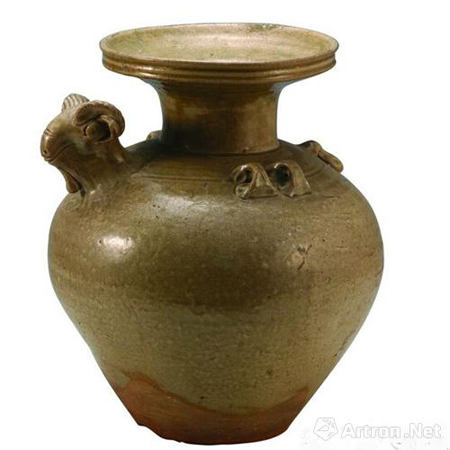
A celadon jar with a dish-shaped mouth.
This is a celadon jar with a dish-shaped mouth. A sheep's head decorates on one of the jar's shoulders. With a height of 30 cm and an opening of 18.1 cm, the pot's smooth glaze and color make it appear to be delicate.
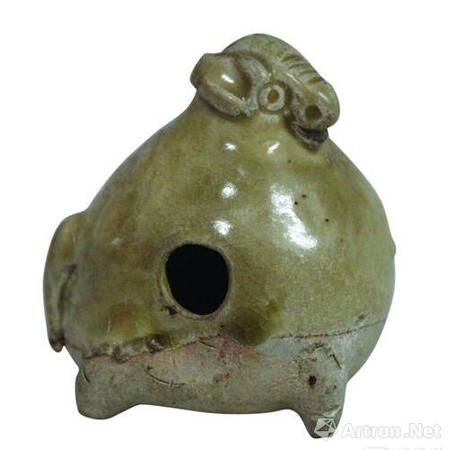
A sheep-shaped Xun
During the Tang and Song dynasties, sheep patterns were widely used as decoration on utensils and other items. For example, this is a sheep-shaped Xun, an ancient holed wind instrument, which was a children's toy in the Song Dynasty.
Yuan, Ming and Qing dynasties (1271-1911) :
The sheep motif is commonly seen on porcelain during the Yuan, Ming and Qing dynasties. In the Qing Dynasty, the image of three rams together was a common decoration on arts and crafts because people believed three rams would bring a propitious beginning.
Ancient artifacts about sheep
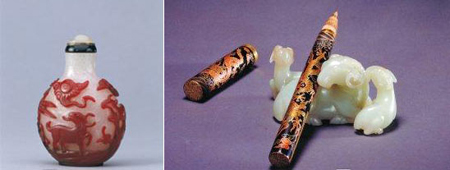
L: A 6 cm snuff bottle from the middle Qing Dynasty is decorated with ram patterns.
R: A grey-white jade penholder from the Qing Dynasty is in the Palace Museum collection. Featuring a ewe and two little lambs crouched together, the vivid images convey a warm feeling.
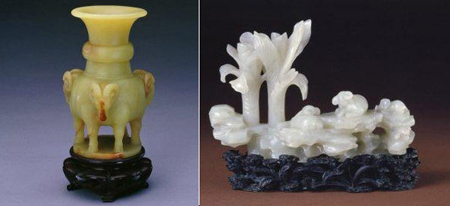
L: A topaz zun, or wine vessel, from the Qing Dynasty is decorated with three sheep reliefs on its body. It is in the Palace Museum collection.
R: This grey jade penholder decorated with ram patterns is from Qing Dynasty and is in the Palace Museum collection. It depicts three sheep crouching on a stone beside two large banana trees in bloom. Pens can be put in the hollowed trees or gaps among the sheep.
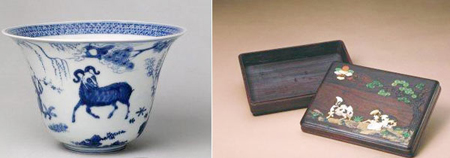
L: A blue-and-white bowl painted with ram images from the Jiajing period of the Ming Dynasty is in the Palace Museum collection.
R: A rosewood rectangular box painted with a shepherd scene dates from the early Qing Dynasty. It is 6.8 cm high, 13.6 cm long and 10.6 cm wide. Palace Museum collection.
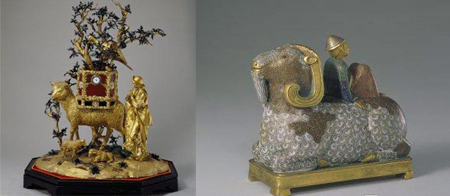
L: An 18th century gold plated copper clock depicts a shepherd's scene.. We can see a shepherd blowing a horn behind two lambs on the grassland and a ewe carrying a bell on its back.
R: An enamel penholder from the Qianlong reign period of the Qing Dynasty depicts a shepherd sitting on the back of a curled up ram. The life-like artifact is a representative work of the Qianlong period.

